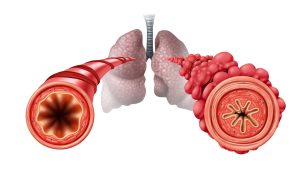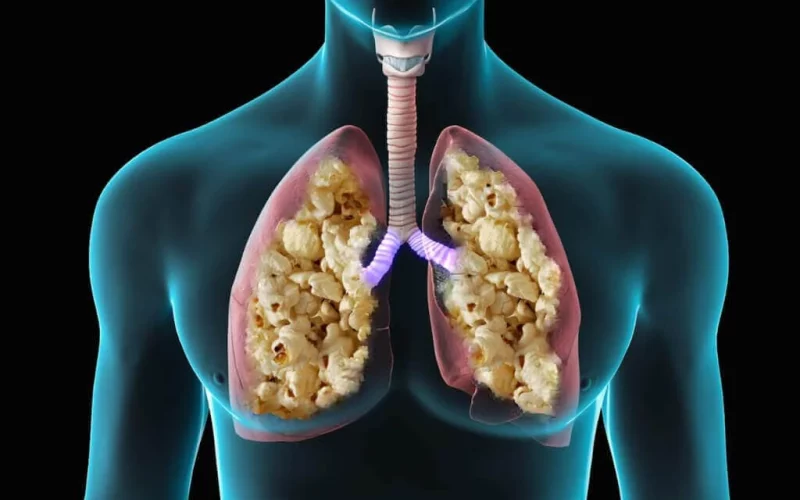The Origins of Popcorn Lung
Popcorn lung, scientifically known as bronchiolitis obliterans, gained notoriety in the early 2000s when a cluster of cases emerged among workers in microwave popcorn factories. The condition earned its nickname due to its association with diacetyl, a chemical used to impart a buttery flavor to microwave popcorn. Inhalation of diacetyl vapor led to severe lung damage, causing irreversible harm to the small airways.
Identifying the Risks
Occupational Exposure
Workers in food processing plants, particularly those involved in flavoring and manufacturing popcorn, face the highest risk of developing popcorn lung. Prolonged exposure to diacetyl and other volatile compounds increases the likelihood of lung injury, emphasizing the importance of stringent safety measures in such environments.
E-Cigarettes and Vaping
In recent years, concerns have arisen regarding the potential health risks posed by e-cigarettes and vaping products. While diacetyl is no longer used as frequently in e-liquid formulations, studies have identified the presence of other harmful chemicals capable of causing lung damage. As the popularity of vaping rises, so too does the importance of understanding and mitigating these risks.

Understanding Lung Damage
Mechanisms of Injury
Popcorn lung primarily affects the bronchioles, the smallest airways in the lungs responsible for transporting air to the alveoli. Inhalation of diacetyl vapor triggers an inflammatory response, leading to the formation of scar tissue in the bronchioles. Over time, this scarring obstructs airflow and impairs lung function, resulting in symptoms such as coughing, wheezing, and shortness of breath.
Chronic vs. Acute Exposure
While acute exposure to high concentrations of diacetyl can cause rapid onset of symptoms, chronic exposure presents a more insidious threat. Prolonged inhalation of lower levels of diacetyl over an extended period may gradually lead to the development of popcorn lung, highlighting the importance of vigilance and monitoring in occupational settings.

Evaluating Vulnerability
Individual Susceptibility
Not everyone exposed to diacetyl will develop popcorn lung, underscoring the role of individual susceptibility. Factors such as genetics, pre-existing lung conditions, and overall health status can influence an individual’s vulnerability to lung damage. Additionally, lifestyle choices such as smoking may exacerbate the risk, further emphasizing the need for comprehensive risk assessment.
Regulatory Measures
In response to growing concerns, regulatory agencies have implemented measures to mitigate the risks associated with diacetyl exposure. Occupational safety guidelines now mandate the use of engineering controls, personal protective equipment, and regular monitoring to minimize the risk of lung injury among workers. Similarly, the regulation of e-cigarette ingredients aims to safeguard public health and prevent potential harm. Explore More About (Skin Health)
Promoting Awareness and Prevention
Education and Training
Effective prevention strategies rely on comprehensive education and training initiatives targeting both workers and consumers. By raising awareness of the hazards associated with diacetyl exposure and promoting best practices for risk mitigation, stakeholders can empower individuals to make informed decisions regarding their health and safety.
Research and Innovation
Ongoing research efforts seek to expand our understanding of popcorn lung and develop innovative solutions for prevention and treatment. From alternative flavoring agents to advanced respiratory protective equipment, continued investment in research holds the key to mitigating the impact of popcorn lung on affected individuals and communities.
Conclusion
Popcorn lung remains a significant occupational and public health concern, necessitating proactive measures to address the associated risks. By understanding the origins of the condition, identifying key risk factors, and implementing effective prevention strategies, stakeholders can work together to safeguard respiratory health and minimize the incidence of popcorn lung in vulnerable populations.












